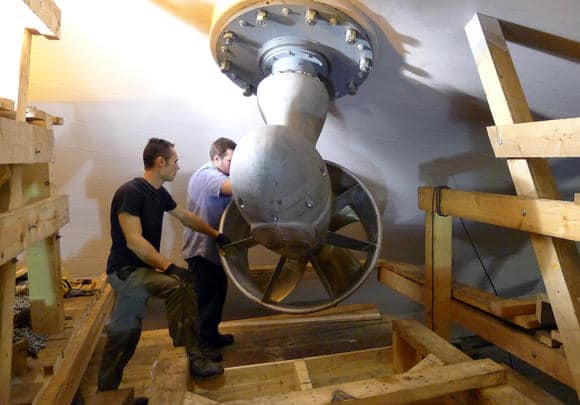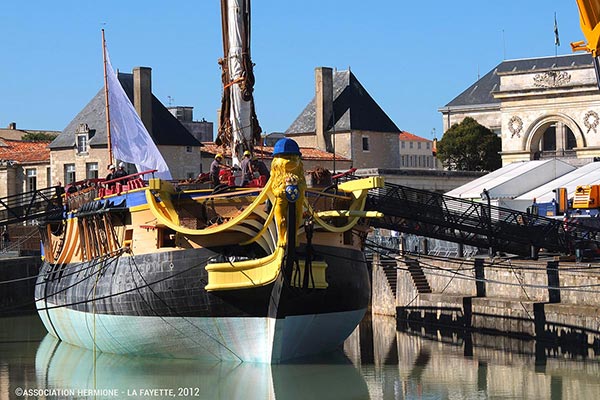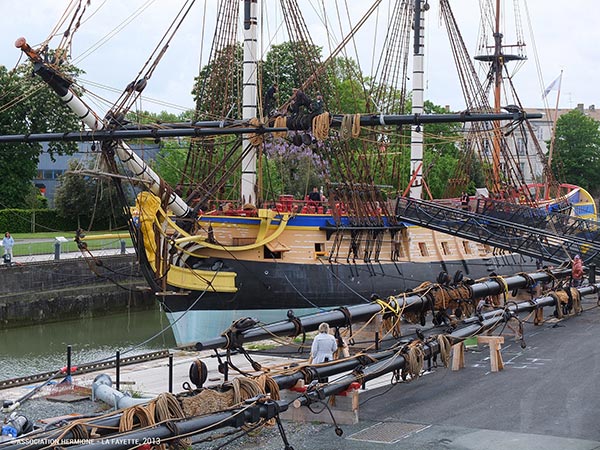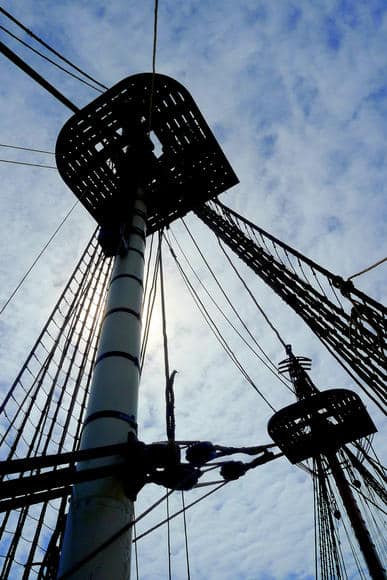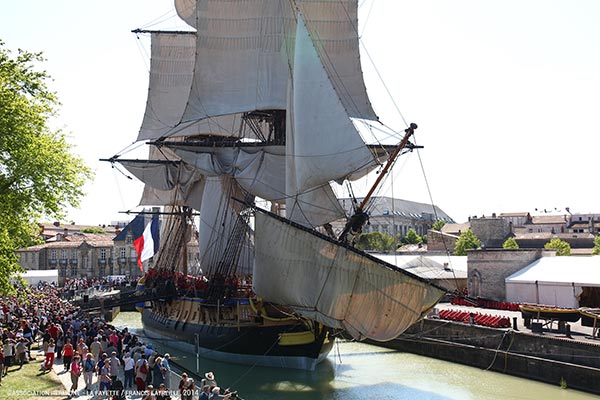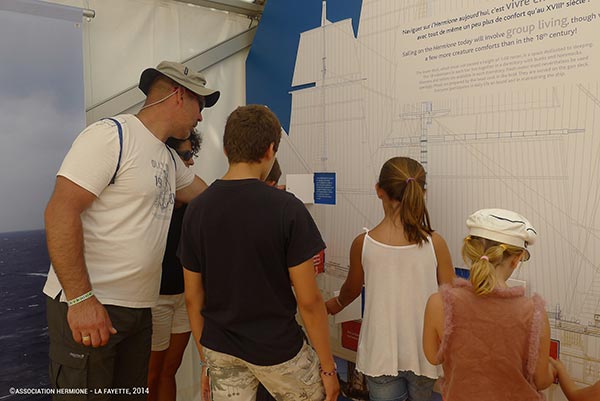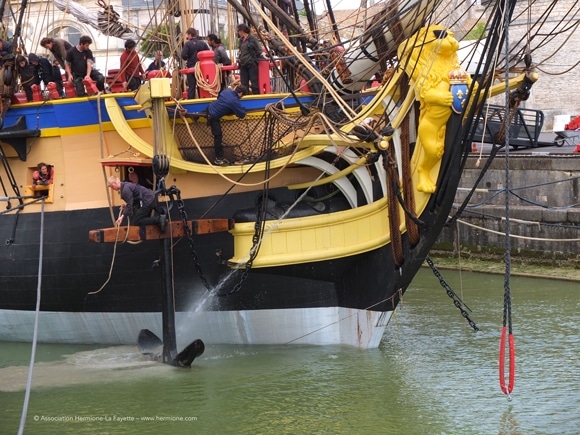It was in the early 1990s that the idea of rebuilding the Hermione was first floated, following the restoration of the Arsenal de Rochefort. This reconstruction was part of the city of Rochefort’s lengthy process of reappropriating its maritime heritage, which began in the 1960s with the restoration of the Corderie Royale. The decision was made to reconstruct one of the Arsenal’s most iconic ships, the Hermione. Thirty years after the project started, it is impossible to deny what a success it has been. The new frigate managed to rally all the key players in the territory, from the city of Rochefort and the Nouvelle-Aquitaine region to the Department of Charente-Maritime.
The HERMIONE-LAFAYETTE association, a group of people who are passionate about everything and anything maritime, was responsible for bringing this project to life.
While the project may have seemed crazy, the objective was clear. That objective was to recreate a unique part of France’s seafaring heritage by building a frigate from the French Navy’s golden era. Because the association wanted this extraordinary adventure to be shared with as many people as possible, the ship’s construction yard was open to the public.
The association’s main challenge was reconstructing an 18th century frigate using historic techniques, while incorporating modern technical data so that the ship was certified for sailing. It was a real feat because of the multiple problems then posed by the nature of such a shipyard. It involved finding people with the know-how to reproduce old techniques, keeping the public safe, operating responsibly in a site that was classified as a historical monument, keeping the various stages of construction going and training a crew who were qualified to sail this kind of ship.
Since 2014 and its first successful sea trials, the frigate is now the largest replica sailing ship in the world. These enthusiasts of heritage, history and the sea took a really crazy risk but their bet paid off!
Today, the Hermione and its maintenance workshops can still be visited in Rochefort at the Arsenal des Mers. The Arsenal gives you access to the Hermione, the Corderie Royale, the Musée National de la Marine and, in good weather, you can even see what it’s like to be a boatswain in the Accro-Mâts mast adventure area!
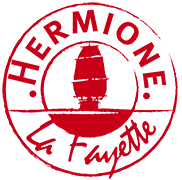

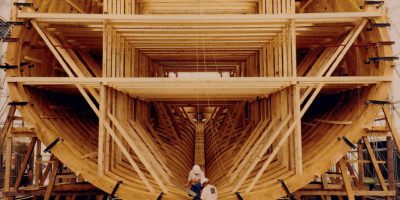

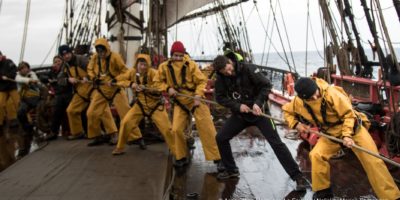
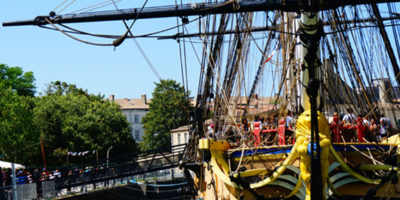
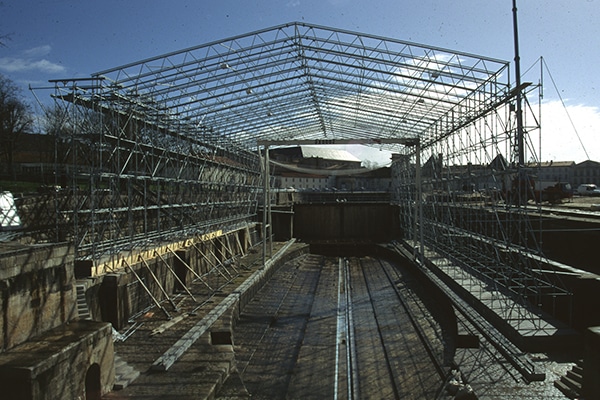
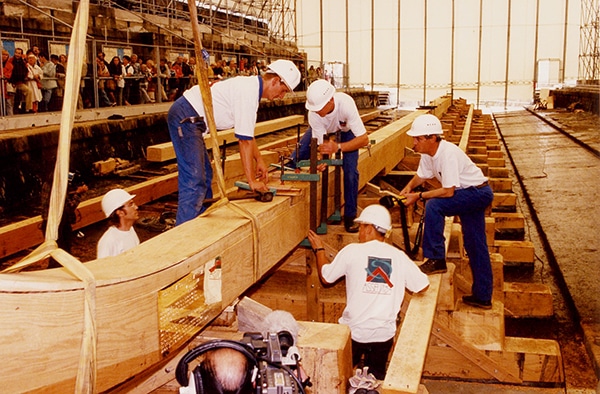
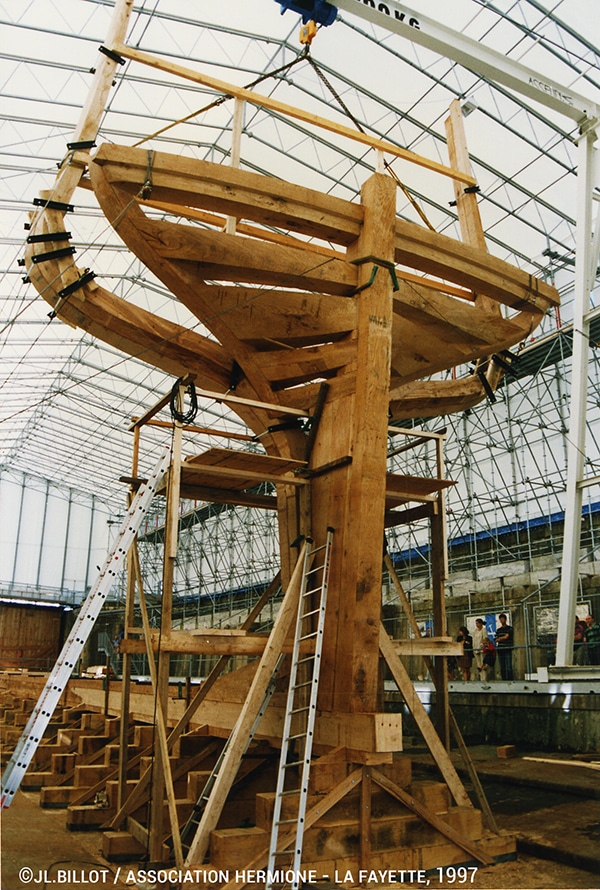

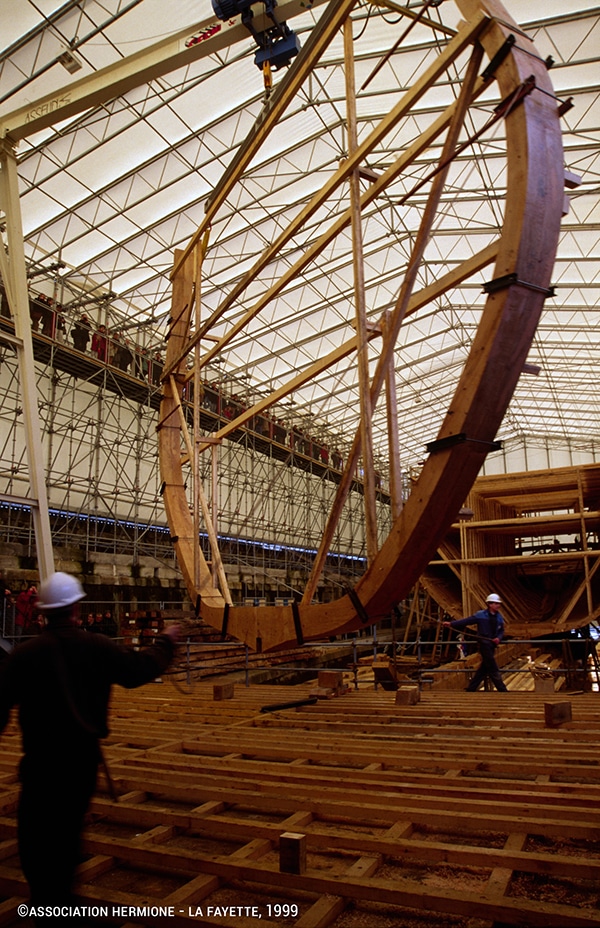
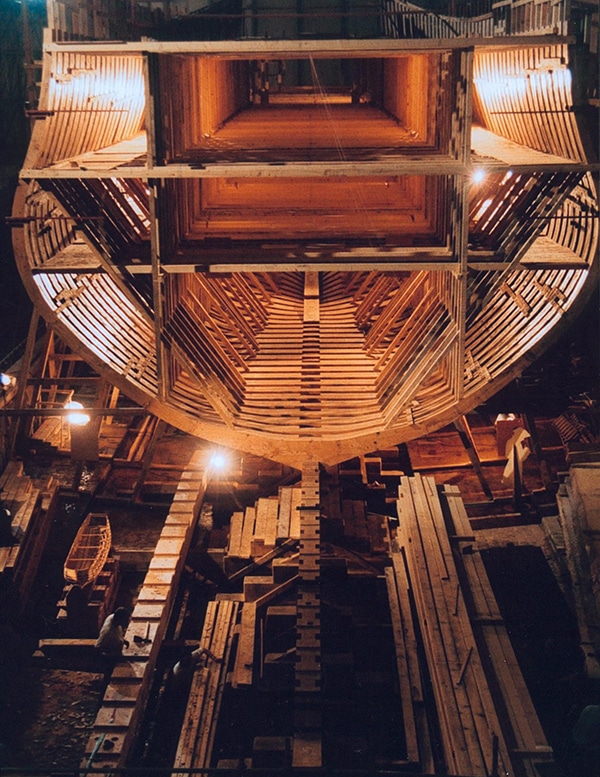
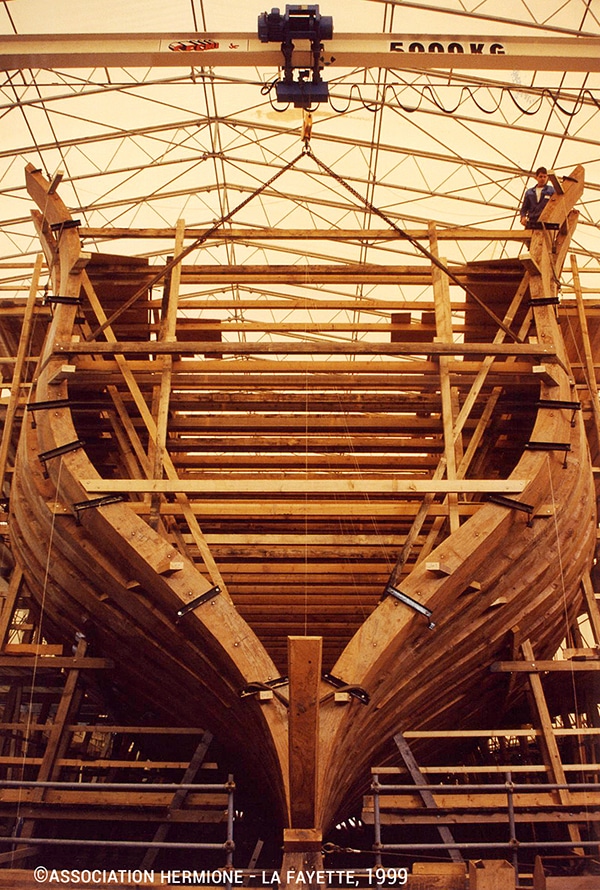
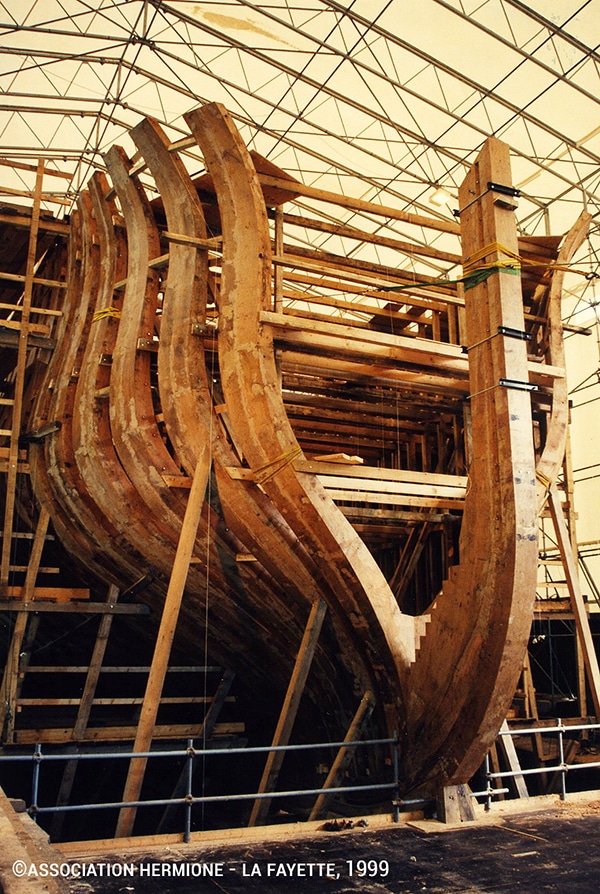
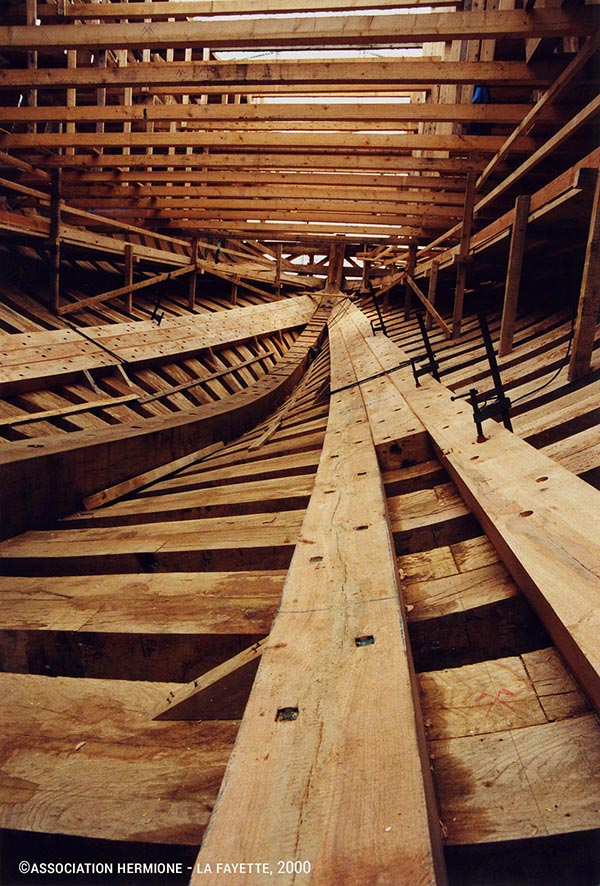
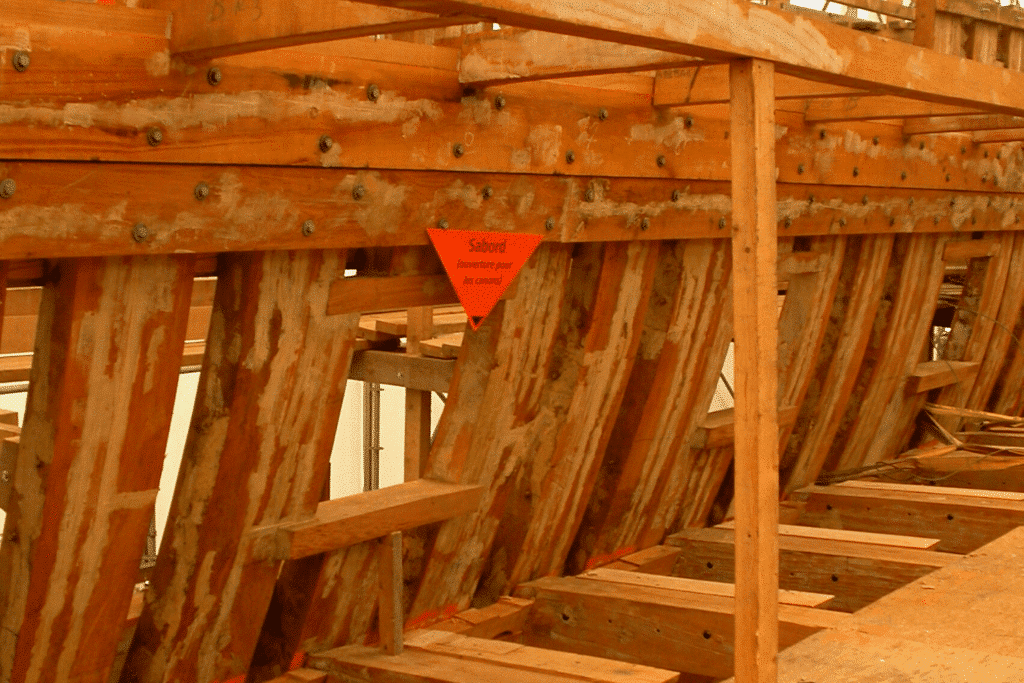
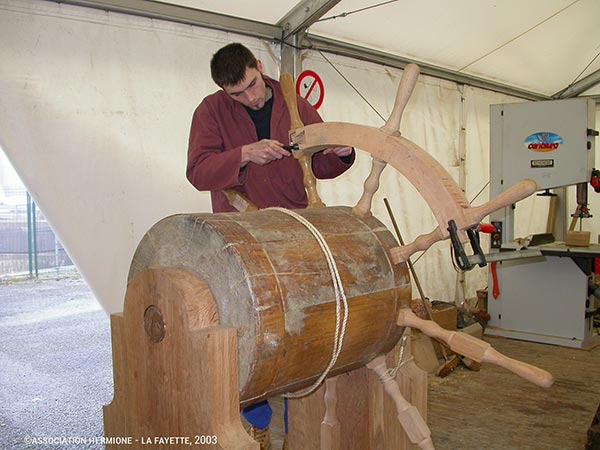

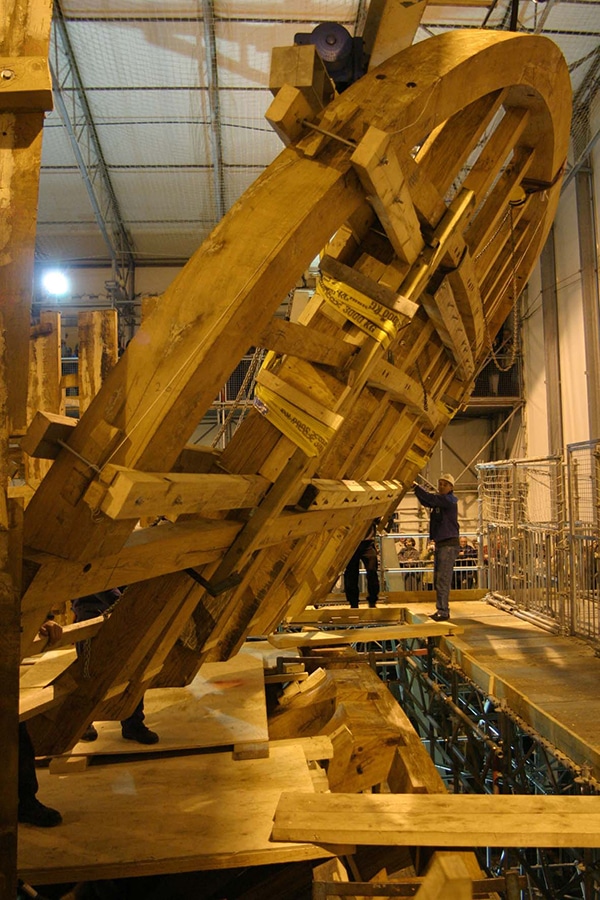

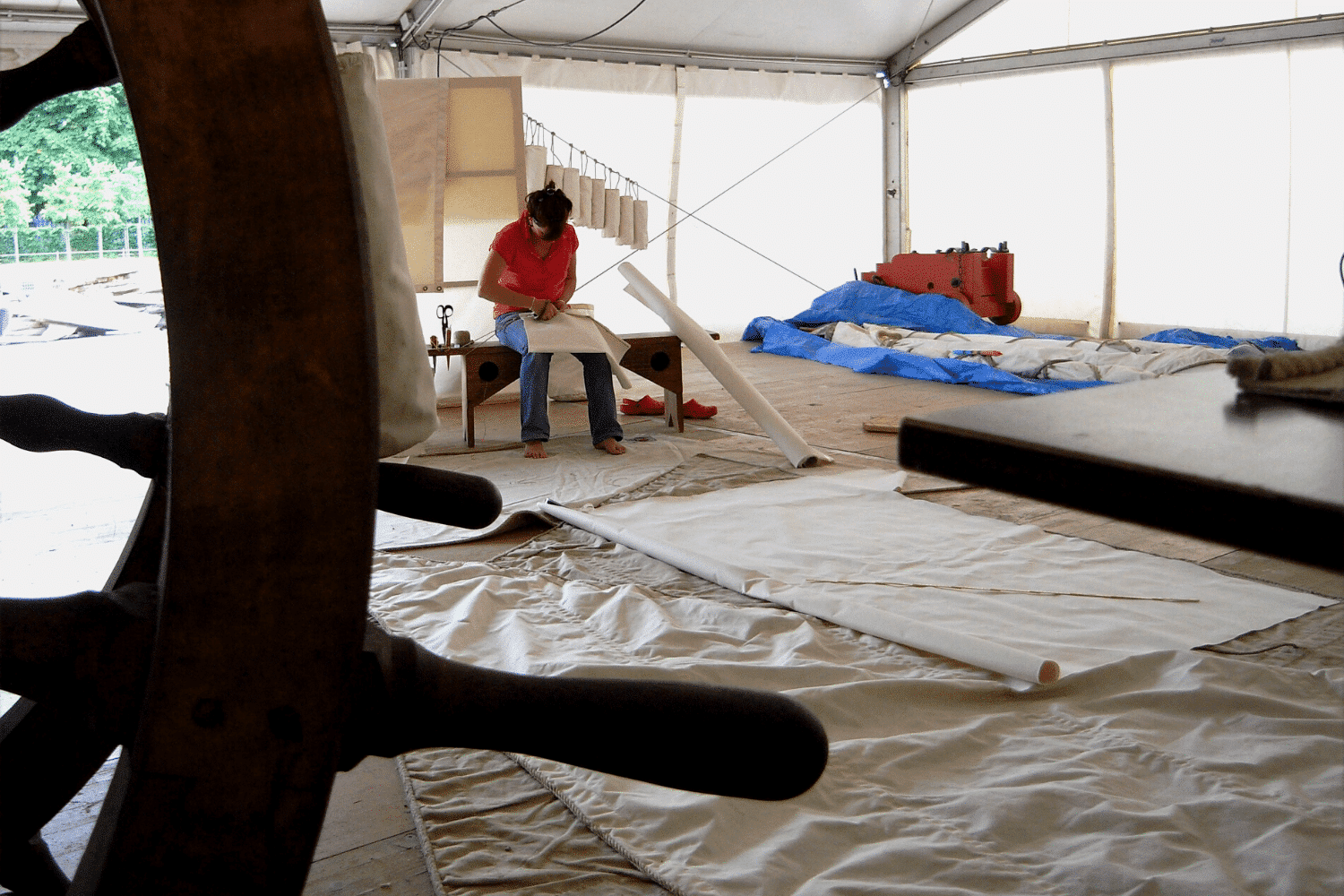
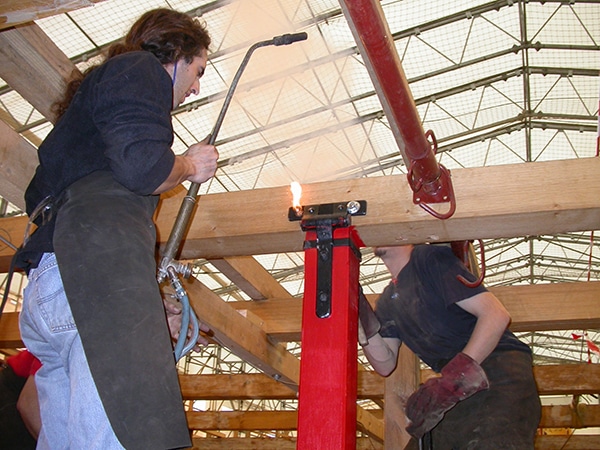
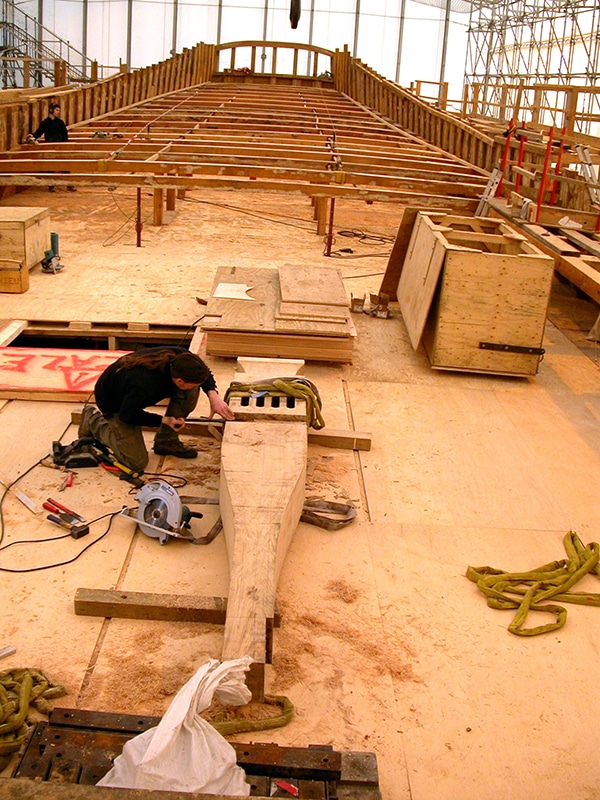
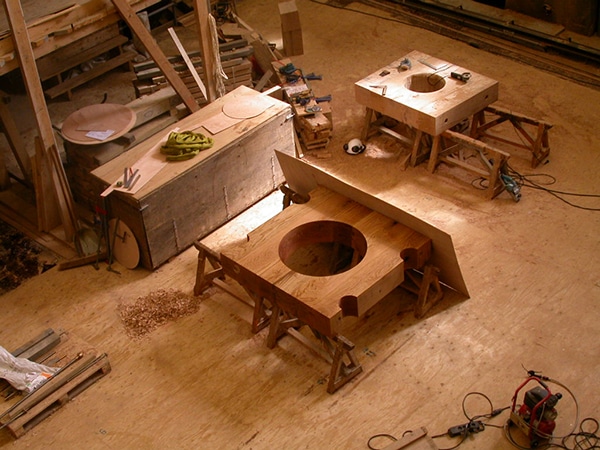
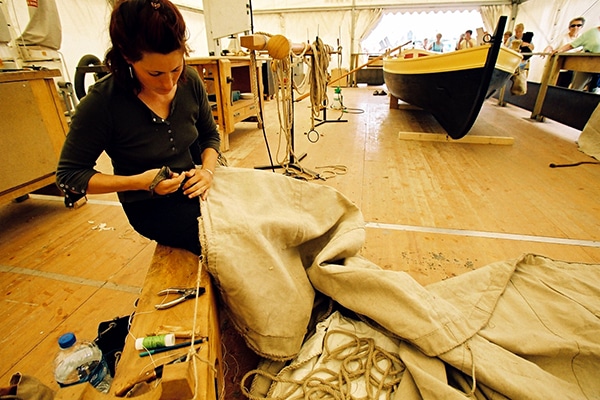
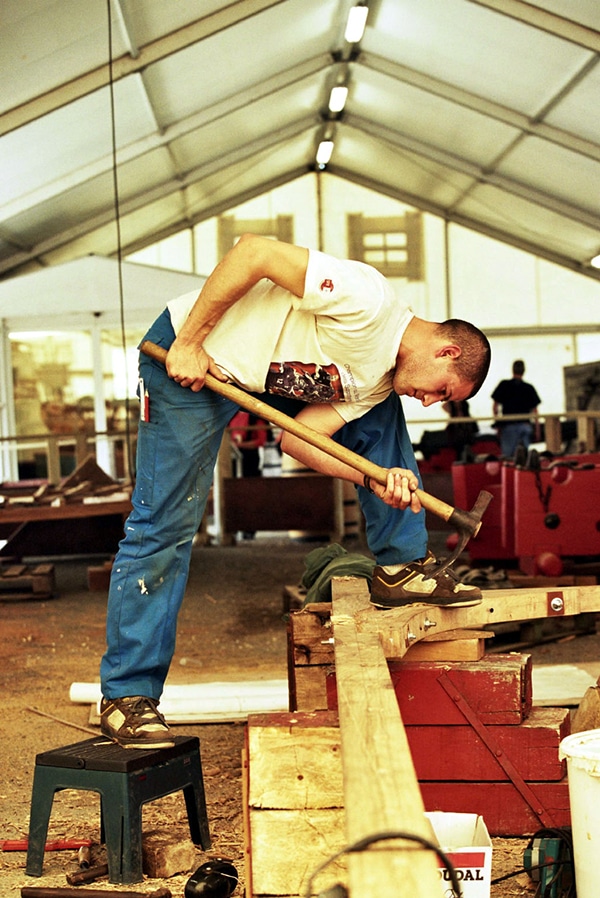
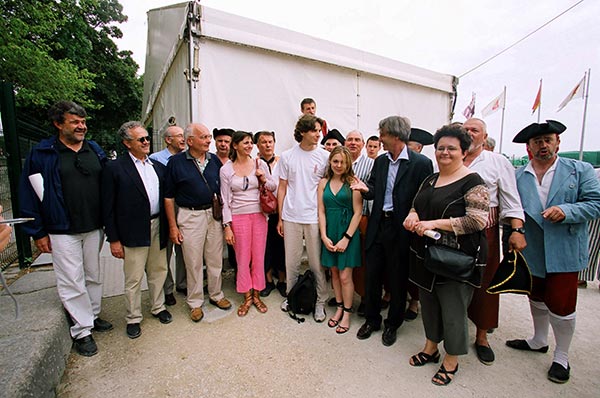
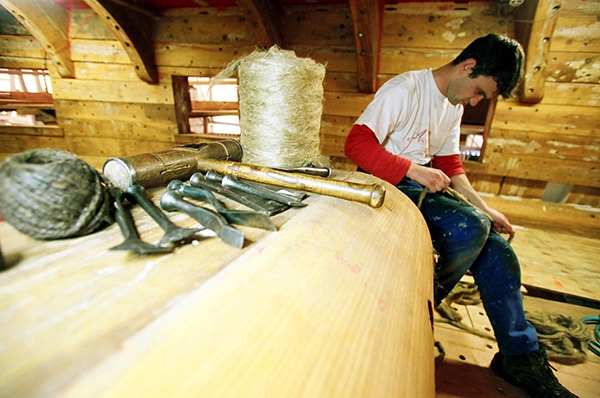
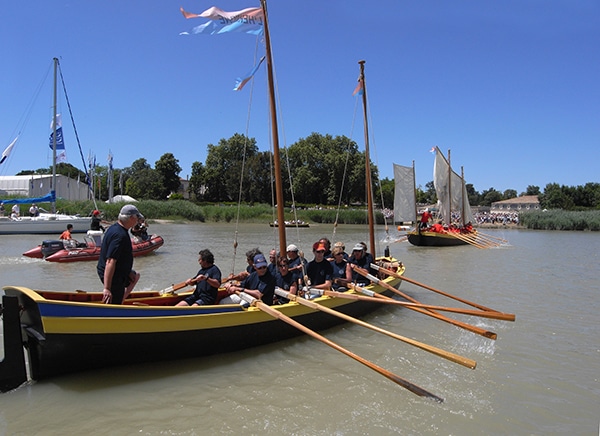


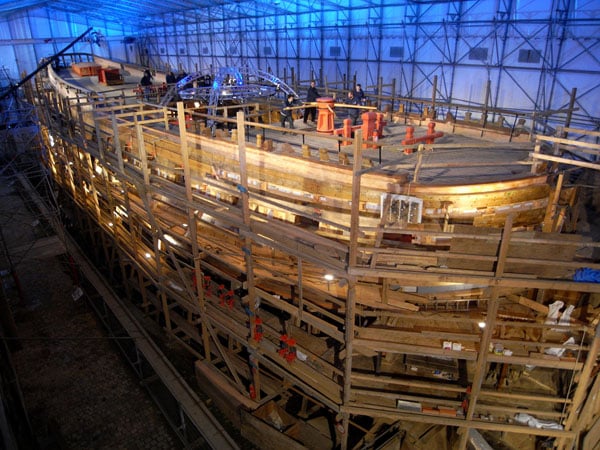
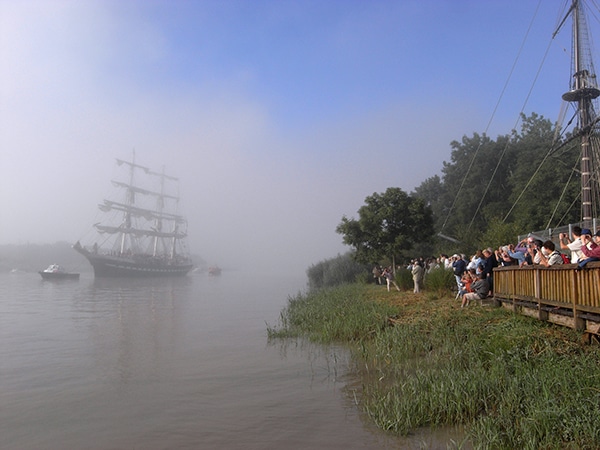
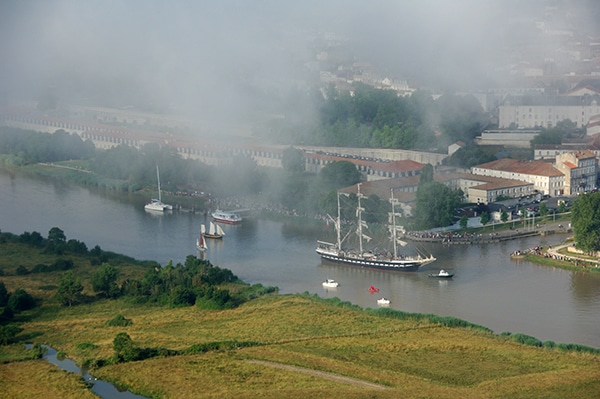
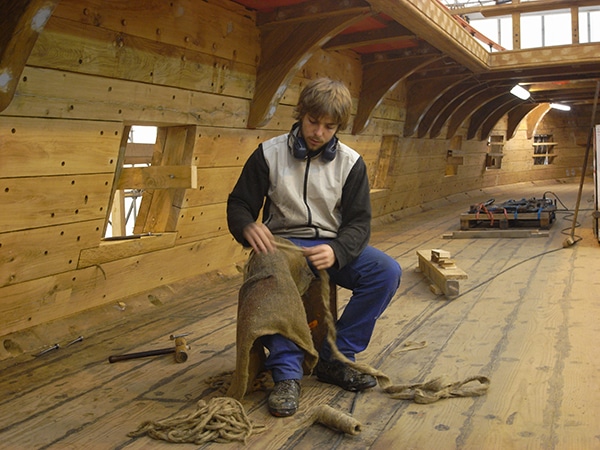
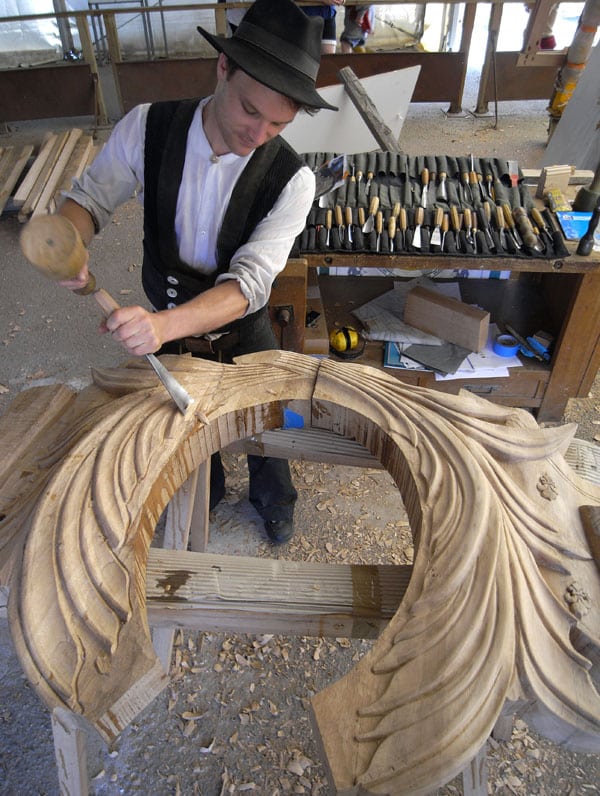
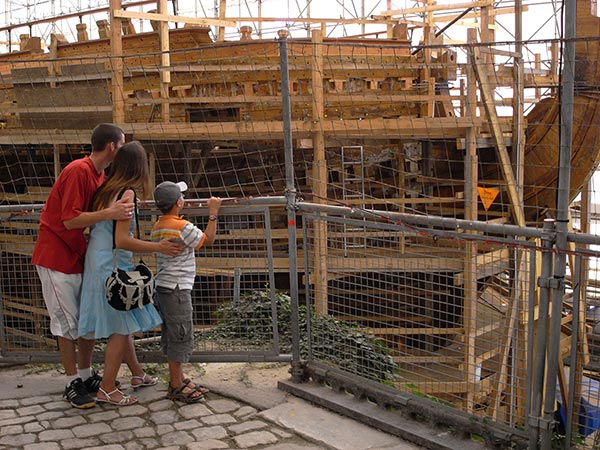
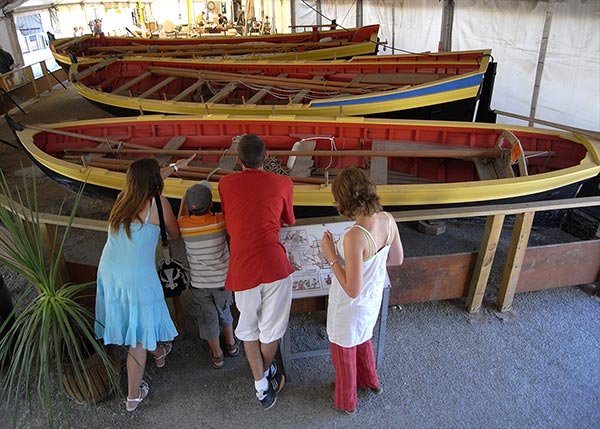
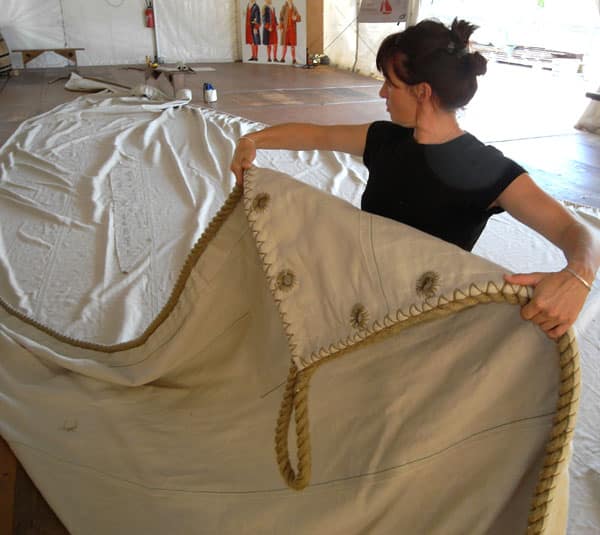 Les logements des officiers sont terminés dans la Grand Chambre, espace de logement et de commandement réservé aux officiers les plus gradés.
Les logements des officiers sont terminés dans la Grand Chambre, espace de logement et de commandement réservé aux officiers les plus gradés.